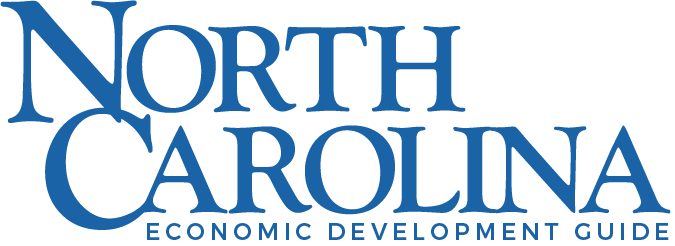Building a community
Community colleges are vital in producing the next generation of skilled workers in North Carolina and beyond.

Provided by Stephen J. Coppedge, Ncccs
The North Carolina Community College System plays a huge part in the state’s thriving economy. About 40% of N.C. workers have received education or training at one of the state’s 58 community colleges during that last decade. The accumulated contribution of former students totaled $19.6 billion in added state income, creating more than 322,000 jobs, according to a 2015 NCCCS study.
Peter Hans has been leading the charge as system president since May 2018, incorporating his 20 years of leadership experience in higher education policy and governance. Hans grew up in Southport and Hendersonville, then earned a bachelor’s degree at UNC Chapel Hill and a Master of Liberal Arts in extension studies from Harvard University. He spent a combined 18 years on North Carolina’s governing boards for community colleges and the UNC System. From 2016-18, he was a senior adviser to former UNC System President Margaret Spellings on issues such as technology, health care, strategic planning and K-12 education. Hans’ career also includes serving as a policy adviser to N.C. political leaders Lauch Faircloth, Richard Burr and Elizabeth Dole.
Edited for brevity and clarity
WHAT HAVE BEEN YOUR TOP PRIORITIES SINCE TAKING THE HELM AS PRESIDENT OF THE N.C. COMMUNITY COLLEGE SYSTEM? HOW HAS THE SYSTEM CHANGED OVER THE LAST YEAR?
My focus has been to unify the community colleges toward a common set of goals. We agreed on critical areas and won full support from the legislature and the governor toward seven of our eight budget priorities this year, including workforce training, information technology, Hurricane Florence relief, expansion of a Career Coach program and capital funding to upgrade facilities. While final budget passage remains in limbo, we are grateful for the bipartisan support and, especially, for a $12 million proposal to achieve parity in the funding of short-term workforce training programs as compared to degree programs. This will help us prepare more people for jobs that are available right now.
Another priority was to promote our community colleges to students through the first-ever statewide marketing campaign, which fully launched in August, thanks to the generosity of the John M. Belk Endowment and the North Carolina Community Colleges Foundation. Through radio, TV, billboards, [and] print and digital ads, our story is being shared with millions of North Carolinians. Our message is simple: choose a higher education focused on getting you hired — “Your hire education.” We have to do a better job [of] telling prospective students about what they can gain at their community colleges. The marketing effort is one way to do that.
We are also changing our internal processes to better serve students. I like to think of success in terms of four pillars: simplify, align, support and accelerate. We want to smooth out the educational journey for students, with less confusion, more defined career paths and effective advising along the way. We have to be able to work in concert with the public schools, universities and local businesses to provide relevant skills training and education. We also need to support our students in order to help them get to a degree or certificate faster. This has never been more important, as technology and automation are creating dramatic change in the workplace and society.
WHAT MAKES THE N.C. COMMUNITY COLLEGE SYSTEM UNIQUE FROM OTHER STATES’ PROGRAMS?
We enjoy strong support from the public, as well as political, civic and education leaders in North Carolina. We are one of the largest systems in the country, with 58 colleges spanning the state, available to any resident within a half-hour drive. Our community colleges provide so much for so many — from literacy and basic skills, to dual enrollment for high school students, to short-term workforce training, to two-year associate degrees. We provide a more affordable option for the first two years of college for students who go on to succeed at four-year colleges and universities. We provide customized training for local business and act as an engine of economic development. The vitality, versatility and adaptability of our colleges make them essential leaders for the state’s future.
ARE THERE SPECIFIC PROGRAMS OR COURSES THAT HAVE BEEN ADDED TO ADDRESS THE WORKFORCE SHORTAGES IN CERTAIN INDUSTRIES?
In an effort to be responsive to workforce needs, we are always looking at our portfolio of programs and adding to them if necessary. Recently, we’ve launched a new program in public safety administration, for example. We’ve also made it easier for all colleges to use an expedited application process for mechatronics engineering technology. Other new programs include those to train new electric line workers, truck drivers, highway construction trades and corrections officers. These are careers that are in high demand right now.
WHAT IS THE COMMUNITY COLLEGE SYSTEM DOING TO HELP BRIDGE THE STATE’S RURAL/URBAN DIVIDE?
We are engaged in creative efforts to meet the needs of people in rural counties and areas that are economically distressed. One example is RAMP East, or the Regional Advanced Manufacturing Pipeline for Eastern North Carolina, which spans 10 counties. This is a coalition of eight community colleges, economic development entities, workforce development boards and nonprofits to give residents a pathway toward a wide array of new, advanced-manufacturing jobs. We offer Advanced Manufacturing Institutes that provide short courses to introduce students to the basic skills they need in order to pursue these technical jobs. The initiative has already gained dozens of industry champions who are searching for skilled employees.
We are also creating and maintaining close alliances with business in many areas of the state, both to build the workforce of the future and to give [businesses] a voice in the development of new programs. One example is the ApprenticeshipNC program, which has grown by 44% since it moved to the community college system two years ago. Last year, more than 11,000 people in North Carolina were served in the apprenticeship program. This model is becoming more popular, and it serves both the needs of students and employers.
WHAT STEPS ARE UNDERWAY TO CUT TUITION COSTS AND MAKE EDUCATION MORE AFFORDABLE?
There were legislative tuition increases in the years after the recession, but tuition and fees have been fairly stable for the last few years. There are a number of efforts underway to keep prices down for students. On the local level, colleges are covering tuition for students who meet certain criteria. For example, the Durham Tech Promise program provides up to $1,000 a year for two years to eligible students who enroll within one year of high school graduation. The program is funded by Durham and Orange counties. Private scholarships are also making a difference for many.
Students are saving money in other ways. Career and College Promise offers high school students free community college courses, helping them to progress more affordably to a two-year degree. Better transfer agreements help community college students transfer more credits when they go on to a four-year university, saving tuition dollars in the long run. And the Finish Line Grants program announced last year by Gov. Roy Cooper provides grants to students who encounter unforeseen financial challenges such as medical bills or car repairs. More than 1,900 grants have been awarded so far, helping students stay on track to graduate.

